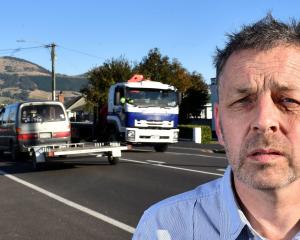A University of Otago master's student is trialling ways to save sand dunes below John Wilson Ocean Dr which he says are at risk of being wiped out by any sizeable storm.
Second-year master of science student Tom Simons-Smith said three gaps had been carved in the dunes below the popular walkway to encourage sand build-up behind the face (seaward foredune) of the dunes.
The gaps would act as pathways, allowing wind to move sand closer to the road, ultimately moving a greater proportion of the dune out of reach of storm surge.
"At the moment one big storm could erode them all,'' he said.
Research organiser Associate Prof Michael Hilton said if successful, the method could save ratepayers significant money and vastly improve the future of the area.
"This might buy years or decades for John Wilson Dr ... The dunes were wiped out in 1978 and they are very steep, very close to the sea and they could go at any time.''
The Dunedin City Council was supporting the trial which could assist with the council's management of foredunes in the future, he said.
The risk of erosion had increased because of a decrease in foot traffic over the dunes.
"Traditionally, people have been told to keep off the dunes. But foot traffic promotes sand to be moved.''
He expected the new gaps would become "popular walkways'', which while not the main reason for their formation, would also assist with flattening the dunes.
Mr Simons-Smith said the three gaps, which ranged in size and depth, would be monitored using 3-D digital terrain modelling to assess whether a particular gap was more effective at funnelling wind onshore.
Prof Hilton said the public response to the trial had been positive.
"This road is so valued, and so long as the foredunes are here it will be protected.''
The trial would cost about $2000.
A final survey from the trial will be collected in six months.












